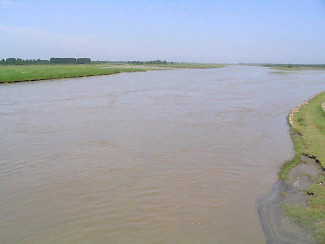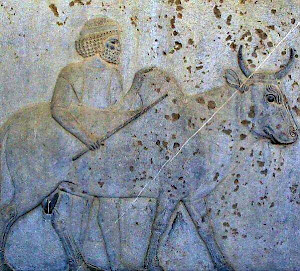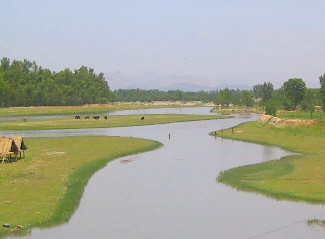Cophen (Kabul)
Q8515Cophen: river in eastern Afghanistan and the western Punjab, the modern Kabul

The source of the river Kabul is in the Hindu Kush mountains, not far from the modern city with the same name, the capital of Afghanistan. From here, it flows to the east until it discharges into the Indus, near Attock.
The river is the natural road to India, and several cities have flourished from trade along the river. Among these were Peucelaotis (Pushkalāvatī, "the city of lotus flowers") and modern Peshawar. Of course, the road was used by foreign invaders as well.

In Antiquity, the valley of the Cophen was known as Gandara. From the late sixth century onward, the inhabitants paid tribute to the Achaemenid king in Persepolis. The second picture, part of the famous relief on the eastern stairs of the Apadana, shows a Gandaran offering his tribute: a buffalo. When the Macedonian conqueror Alexander marched through this area in 327/326 BCE, his soldiers noted that cattle in this land were great and beautiful; therefore, the king selected no less than 230,000 animals and sent them to Europe.note What happened to them, is not recorded.

The third picture is taken near modern Charsadda, which is identical to ancient Peucelaotis. The mountains in the background constitute the frontier between Pakistan and Afghanistan. The road along the Kabul, part of the Grand Trunk Road, is famous because it crosses the Khyber pass.While Alexander himself was occupied in the Swat valley, a Macedonian army commanded by his generals Hephaestion and Perdiccas entered India along this road.